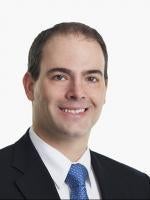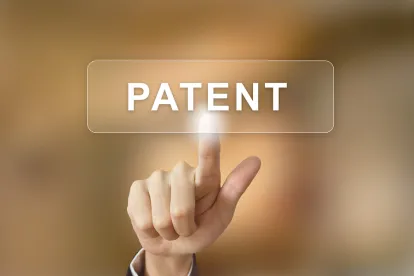In an opinion evidencing the split in opinion regarding the patent eligibility of diagnostic methods, the US Court of Appeals for the Federal Circuit denied a petition for panel rehearing or rehearing en banc, leaving in place a panel opinion affirming the district court’s conclusion that the claims at issue were invalid as ineligible. Athena Diagnostics, Inc. v. Mayo Collaborative Servs., LLC, Case No. 17-2508 (Fed. Cir. Feb. 6, 2019) (per curiam) (Lourie, J, joined by Reyna and Chen, JJ, concurring) (Hughes, J, joined by Prost, CJ, and Taranto, J, concurring) (Dyk, J, joined by Hughes and Chen, JJ, concurring in part) (Chen, J, concurring) (Moore, J, joined by O’Malley, Wallach and Stoll, JJ, dissenting) (Newman, J, joined by Wallach, J, dissenting) (Stoll, J, joined by Wallach, J, dissenting) (O’Malley, J, dissenting).
In the panel opinion, Judge Lourie, writing for the majority, found the claims directed to the natural law of a correlation between the presence of certain antibodies and a particular disease, and found that the claims did not include additional elements transforming the nature of the claim into a patent-eligible application (IP Update, Vol. 22, No. 2). Judge Newman dissented. In her view, the claims as a whole were not directed to the natural law, but to a specific application.
Judge Lourie concurred in the denial because, in his view, the Federal Circuit is bound by the Supreme Court of the United States’ decision in Mayo (IP Update, Vol. 15, No. 3). On a clean slate, Judge Lourie would only exclude generalized natural laws, such as E=mc2 or Boyle’s Law, from patent eligibility. But in Mayo, the Supreme Court ruled that claims directed to the relationship between the concentration of metabolites and the likelihood that a drug dose would be ineffective were directed to a law of nature, and Judge Lourie found the claims at hand similar to the claims in Mayo. Judge Lourie noted that new method of treatment claims and unconventional arrangements of known laboratory techniques can evade Mayo’s prohibition.
Judge Dyk also concurred, explaining that while the Mayo/Alice framework has successfully screened out many claims directed to abstract ideas, the framework has been less successful in cases where the issue involved natural laws. In Judge Dyk’s view, § 101 does serve an important function in addressing the risk that a patent on a natural law would significantly impede future innovation. For example, a patent on the concept of searching for genetic abnormalities and determining their relationship to disease would be rightly patent ineligible. However, in Mayo, the Supreme Court found a specific correlation to be patent ineligible, and the claims at hand were similarly patent ineligible under the Mayo framework. Nevertheless, Judge Dyk noted that the more recent Myriad decision contains language suggesting that diagnostic patents could be patent eligible. Judge Dyk further explained that, in his view, the utility requirement of § 101, properly applied, prevents overbroad conceptual claiming.
In his concurrence, Judge Chen explained that there is a tension between Mayo and Diehr, because Diehr’s analysis requires examining the claim as a whole. Judge Chen explained that the Mayo analysis is more akin to the analysis in Flook, where the claim is examined on an element-by-element basis to find a novel “inventive concept.” Although Flook was not overruled, Diehr (as the later opinion) was understood to be the guiding precedent, and Mayo has upset 30 years of settled expectations.
In dissent, Judge Moore began by noting that all judges on the Federal Circuit agree that the claims at hand should be eligible for patent protection and only disagree as to whether Mayo precludes patent eligibility. Judge Moore noted that since Mayo, the Federal Circuit has found all diagnostic claims patent ineligible, effectively turning Mayo into a per se rule, which the Supreme Court has cautioned against. Judge Moore would distinguish Mayo based on the generality of the claims. In Mayo, the claims covered all processes that make use of a correlation between a drug dosage and a metabolite, while in the case at hand, the claims are directed to a specific method of diagnosis for a specific disease.
Judge Newman dissented as well. She believes the Federal Circuit has mistakenly enlarged the Mayo decision to bar all diagnostic claims. Judge Newman stressed the importance of diagnostic methods in the medical field and the lack of a logical basis for the disparate treatment between diagnostic and treatment claims.
In a final dissent, Judge O’Malley explained that the confusion and disagreement over § 101 have been engendered by the Supreme Court’s instruction to read into § 101 an “inventive concept” requirement, which Congress expressly abrogated when it amended the Patent Act in 1952.




 />i
/>i

